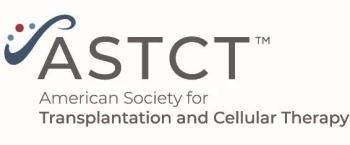
Continuous Rd Prolonged Survival for Transplant-Ineligible Myeloma
Continuous treatment with lenalidomide/dexamethasone significantly improved survival in patients with transplant-ineligible newly diagnosed multiple myeloma.
Among patients with transplant-ineligible newly diagnosed multiple myeloma, continuous treatment with lenalidomide and low-dose dexamethasone (Rd continuous) significantly improved progression-free survival (PFS) and overall survival (OS) outcomes compared with treatment with melphalan, prednisone, and thalidomide (MPT), according to the final results of the FIRST trial
“Rd continuous prolongs OS compared with MPT and is one of the standards of care for transplant-ineligible patients with newly diagnosed multiple myeloma,” wrote Thierry Facon, MD, of Hôpital Claude Huriez in Lille, France, and colleagues.
In the trial, 1,623 patients with newly diagnosed transplant-ineligible myeloma were randomly assigned to Rd continuous (n = 535), Rd18 (n = 541), or MPT (n = 547).
With a median follow-up longer than 5 years, the PFS was significantly longer for Rd continuous compared with MPT treatment (hazard ratio [HR], 0.69; 95% CI, 0.59–0.79; P < .00001) and Rd18. The median PFS was 26 months for Rd continuous, 21 months for Rd18, and 21.9 months for MPT. These results are consistent with those seen at the 3-year analysis.
Continuous Rd treatment was also associated with improvements in OS. The median OS was 59.1 months for Rd continuous compared with 49.1 months for MPT (HR, 0.78; 95% CI, 0.63–0.95; P = .0144). Patients assigned to Rd18 had a similar median OS of 62.3 months.
“The benefit of OS observed with Rd continuous and Rd18 may be driven in part by optimized rescue therapy possibilities in patients treated with Rd vs those treated with MPT,” the researchers wrote. “Patients who received bortezomib-based therapy (the most common second-line therapy) after Rd continuous or Rd18 had better quality responses to second-line treatment and a longer median time from second- to third-line treatment than those who received bortezomib-based therapy after MPT.”
When the researchers looked at the data by best response, patients who achieved a complete or very good partial response with Rd continuous had a median time to next treatment that was about 30 months longer than that with Rd18 (69.5 vs 39.9 months).
Although the benefit of Rd continuous was seen in a majority of the subgroups analyzed, the researchers noted that treatment with Rd was not superior to MPT among patients with high-risk cytogenetics.
“Of note, treatment approaches have changed since the initiation of the FIRST study, and novel therapies including triplets are becoming increasingly available to high-risk patients,” the researchers wrote. “Rd has been explored as a backbone for combination studies, and when combined with bortezomib, has shown some benefit in high-risk patients with newly diagnosed multiple myeloma.”
Newsletter
Stay up to date on recent advances in the multidisciplinary approach to cancer.


















































































